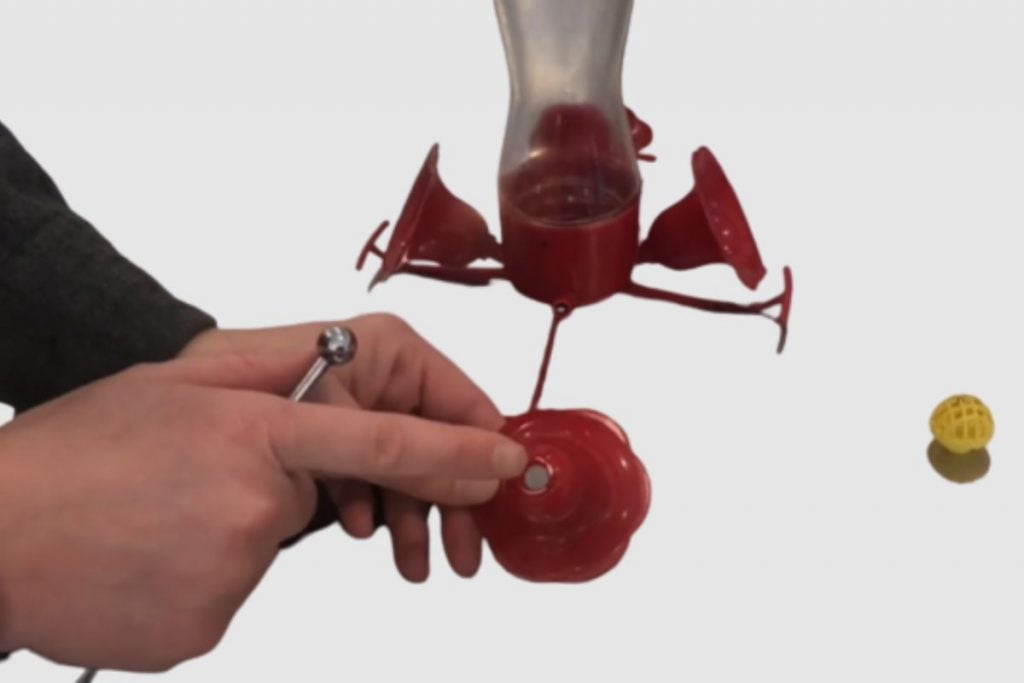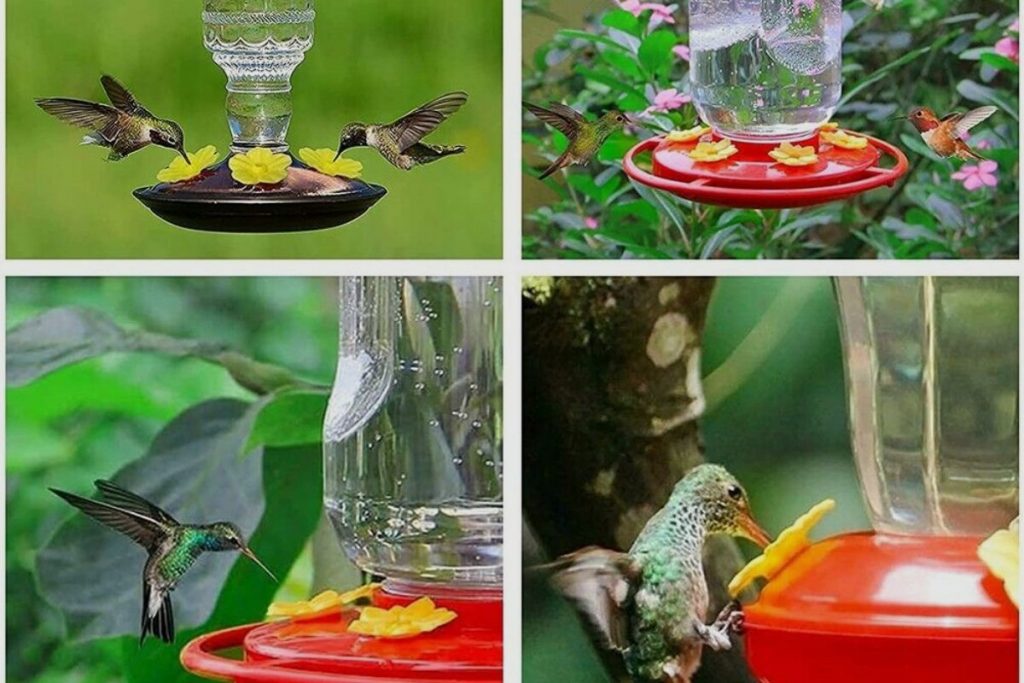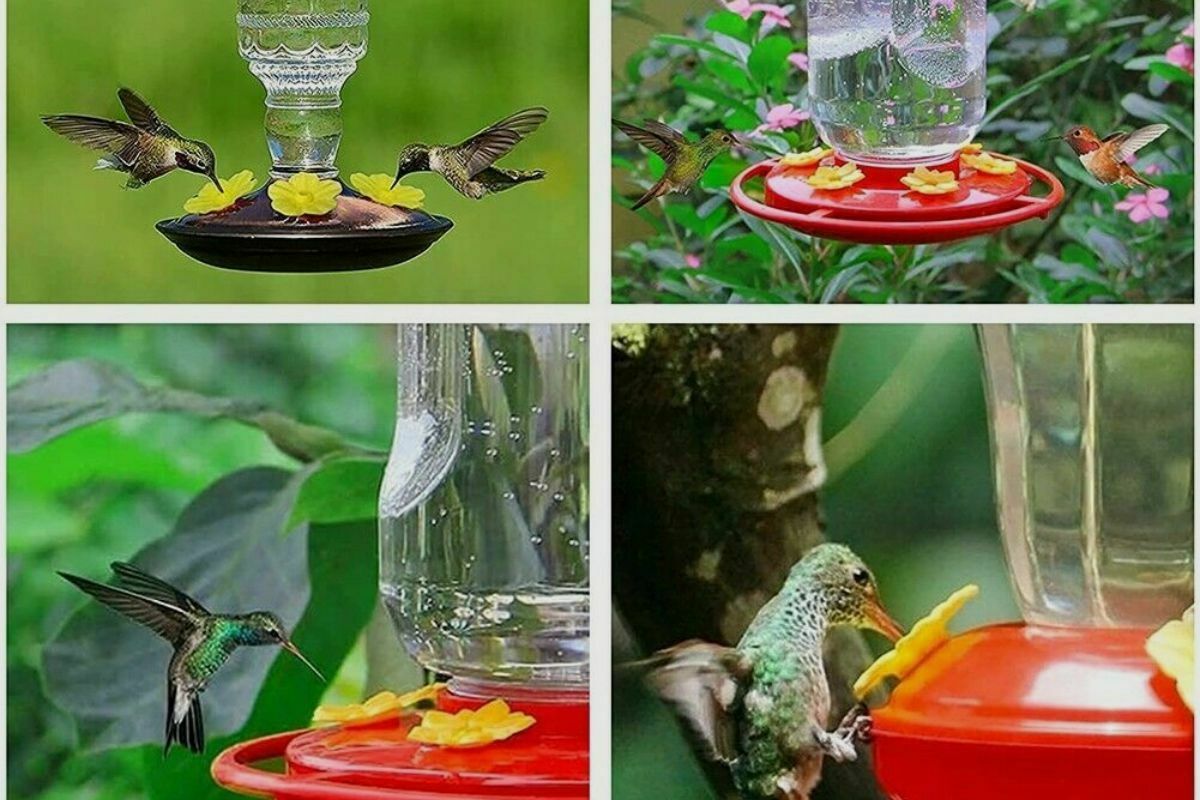Leaking hummingbird feeders can be quite annoying, but fortunately, they’re easy to repair. In this article, I’ll discuss the most effective ways to prevent Hummingbird Feeder drips and leaks, as well as things to consider when selecting a new feeder. With some simple steps, you can have your hummingbird feeder working properly again in no time.
Related Posts:
Best Hummingbird Feeders.
Hummingbird Feeders Comprehensive Guide.
How To Stop A Hummingbird Feeder From Leaking.

Tips on How to Prevent Hummingbird Feeder Drips and Leaks
To prevent hummingbird feeder drips and leaks, it’s important to identify and address the source of the problem. Start by checking the base and lid to ensure they are securely screwed on and that the seal or gasket is in place. If necessary, replace these components with ones that fit correctly.
If the feeder is leaking from the sides or bottom, try replacing any faulty parts or broken pieces before refilling it. If all else fails, consider purchasing a new hummingbird feeder that is better suited to your needs and budget. Researching models with longer warranties can help ensure you get one that’s built to last and won’t leak.
Common Causes of Hummingbird Feeder Leaks
The two most common causes of leaking hummingbird feeders are faulty seals and broken parts. Faulty seals allow nectar or water to escape from the base or lid of your feeder, while broken parts, such as tubes or valves, can cause leakage from other areas of your feeder, such as the sides or bottom. To prevent leaks, always check that seals are tight and secure before filling your feeder and inspect all parts for damage before use.
Another possible cause of leaks is incorrect filling methods or overfilling your hummingbird feeder beyond its capacity level. When filling your birdfeeders with nectar or water, make sure not to overfill them, as this can lead to leakage over time due to pressure buildup within the reservoir tank and tubes leading out of it.
Always fill up only as much as needed for your birds and leave some room at the top (usually 1-2 inches) free for expansion during hot weather conditions when the sugar solution inside might expand in volume due to heat buildup within your reservoir tank walls or tubing system leading out into various parts of your birdfeeders (e.g., ports).
Finally, try checking if there’s any debris blocking off any openings in your birdfeeders, such as drainage holes which could lead to overflowing/leaks if left unchecked for too long without being cleared out periodically in order for excess humidity levels within them (from rain etc.) to exit safely outside rather than build up inside causing pressure/leaks etc., resulting in wasted resources/food etc.

Choosing The Right Hummingbird Feeder For Your Needs
When selecting a new hummingbird feeder, it’s important to consider several different factors such as size, material type, design features, durability, price point and warranty coverage options available on each specific model before making a purchase decision so that you get one capable enough for meeting all future needs without breaking down prematurely like many cheaper models tend to do often due to their low-quality build materials/manufacturing techniques used on them (especially those made overseas).
In terms of size/capacity, levels choose one big enough to accommodating at least 3-4 days worth of food/nectar supply so that you don’t have to keep refilling them too frequently every day yet small enough where they won’t be too heavy/bulky for carrying around/placing on various locations (e.g., balconies) in your backyard/outdoor area etc.
When it comes to materials, opt for feeders made of thicker plastic and stainless steel components that are designed to last longer than their thinner counterparts and can withstand extreme weather conditions such as heat or cold without breaking down too easily. Look for models that come with a built-in ant-moat feature or tight-fitting lids, as these will help keep out unwanted pests while keeping the nectar fresh and safe. Also, make sure to check the type of warranty coverage each model you’re looking at comes with so that if anything happens, you know you’re covered for repair/replacement costs etc.
In terms of design features, look for hummingbird feeders that are easy to clean and allow for customizable filling methods based on your specific needs at any given time, such as those that come with pre-set refill levels, different size perches or even adjustable flow rates from multiple ports depending on what types of birds you’re trying to attract into your backyard (e.g., larger bird species might require more space between port openings etc.).
Finally, look for hummingbird feeders boasting higher quality build materials such as thicker plastic/metal parts and components with sturdy/secure base mounting brackets which will help ensure against accidental tipping over and other similar issues caused by strong gusts of wind or other external forces etc.
Conclusion
Hummingbird feeders can be tricky to repair, but fortunately, they don’t need too much maintenance so long as they are kept clean and free of debris. To fix a leaking hummingbird feeder, make sure to check all seals, gaskets and parts before refilling it, replace broken parts if necessary and consider investing in a new feeder if all else fails.
When selecting a new hummingbird feeder, remember to factor in size, material type, design features, durability, price point and warranty coverage options available on each model, so you end up getting one that’s built to last.
Image Gallery – Tips on How to Prevent Hummingbird Feeder Drips and Leaks



References: Hummingbird, Bird Feeder.
